Leningradskaya street.
This is the eastern part of Kronstadt. In 18-20 th centuries the passenger ship terminal with a pier located here. It was a closest way from Kronstadt to St Petersburg and Oranienbaum by sea. That why former name of the street is the St Petersburg street.
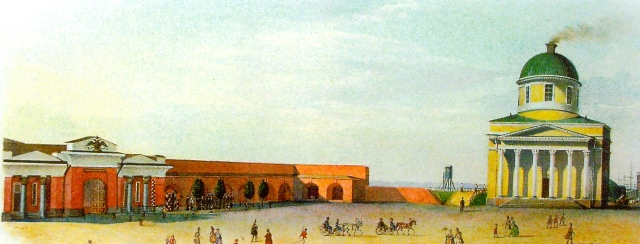
Before the construction of the St Petersburg dam with a road, this pier was one of most useful passenger terminal in Kronstadt. The Kronstadt visitors in 19-20th centuries usually started their exploring the city from this place.
Present Leningradskaya street was a border of Kronstadt. Now fragments of the fortress wall can be seen there.
All passengers traveling to Kronstadt had to register at the guardhouse. Now the guardhouse building is used as the office of the local gas company.
Magnificent building of the water tower you can find nearby. Created in classical style in 1836-1839 the Kronstadt water tower became one of main embellishments of the city. If you have no idea about it real purpose you can decide that it is a temple.
In fact the first city water-supplying system in Russia was created here, in Kronstadt. Water from the Gulf put to the water tower because of the communicative vessels principle and then pumped to the top if the tower. Then water came to the city supply pipes after the cleaning. In fact it was a fresh water thanks to the strong streams of the river Neva reaching Kronstadt. However after storms and because of shipping the water quality went from bad to worse. The sanitary condition of Kronstadt in the 19th century left much to be desired.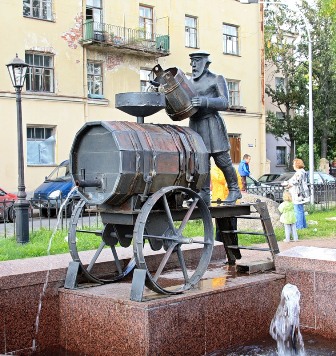
The chief medical officer of the Kronstadt naval hospital, doctor V. Isaev proposed safe and effective technology of the water chlorination. Water chlorination is the process of adding chlorine (Cl2) to water as a method of water purification to make it fit for human consumption as drinking water. Water that has been treated with chlorine is effective in preventing the spread of waterborne disease. For the first time in the world water chlorination for municipal water supply was started in 1910 in Kronstadt. The water tower was reconstructed several times. Now the Kronstadt history museum is located here.
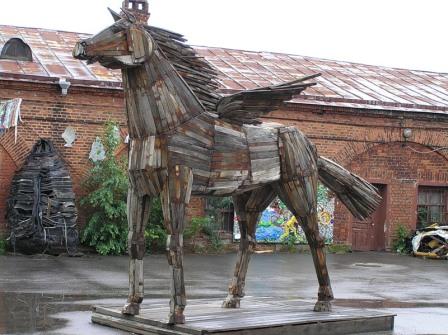
Several fountains and sculptures made by “KronFest” members you can see around it. The International Ecological Festival of arts «KronFest» held annually in Kronstadt. The festival is a cross-disciplinary project that unites arts and ecology.
It represents an artistic approach to the questions of environment and gathers creative forces working as part of ecological projects. On the festival program: creating of art-objects from garbage, exhibitions, plain-airs, performances, workshops and other creative activities connected with ecology. The base of the festival is the Kronstadt History Museum, and some projects take place on forts.
Just in front to the Water tower the building of a former Lutheran church of St. Elizabeth is located.
The church represents a rectangular building. Its main facade is decorated by a six-columned portico of the Corinthian warrant with a triangular pediment. Above altar part the high drum towered with dome and a cross which do not exist now. The St Elisabeth church together with the Water tower and the Guardhouse formed well decorated square – the “façade” of Kronstadt. A small addition to the history of this place. On March 17, 1921 the Red army soldiers entered to Kronstadt here during the suppression of the Kronstadt rebellion.
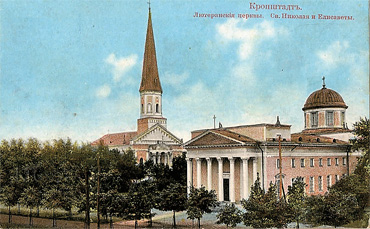
After the Russian revolution the church was closed. The building used as a pumping station in 20th century.
The St Nicholas Swedish and Finnish church was built in 1868 near with the St Elisabeth church. Unfortunately it was blown up in 1930-s.
The Orthodox chapel of Savior on Waters is located nearby. It was made of granite and a pot stone in 1903 by V. Kosyakov (The Naval cathedral was built by him too) .
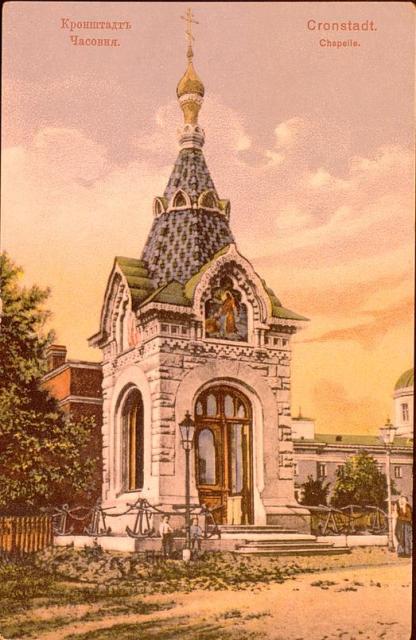
The chapel fronts are decorated with mosaic icons and anchors with chains. It was reconstructed in 2004 to the 300 anniversary of Kronstadt.
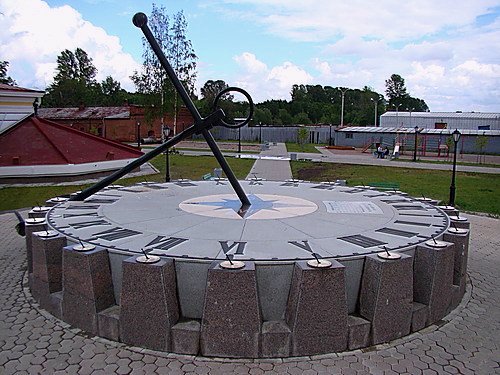 Kronstadt
Kronstadt




